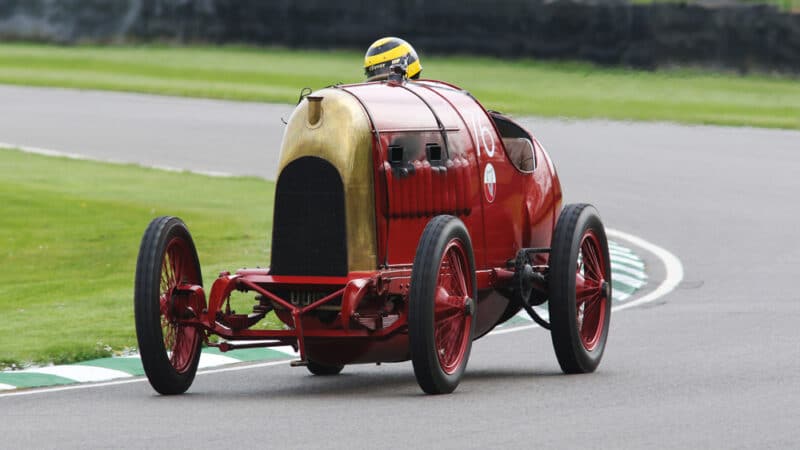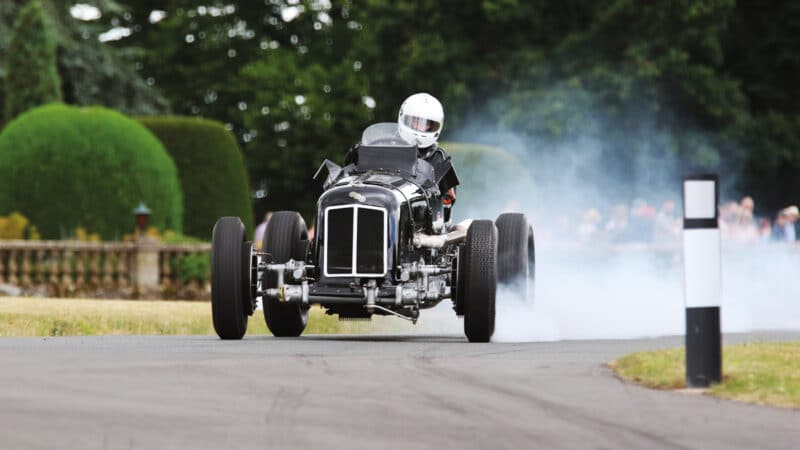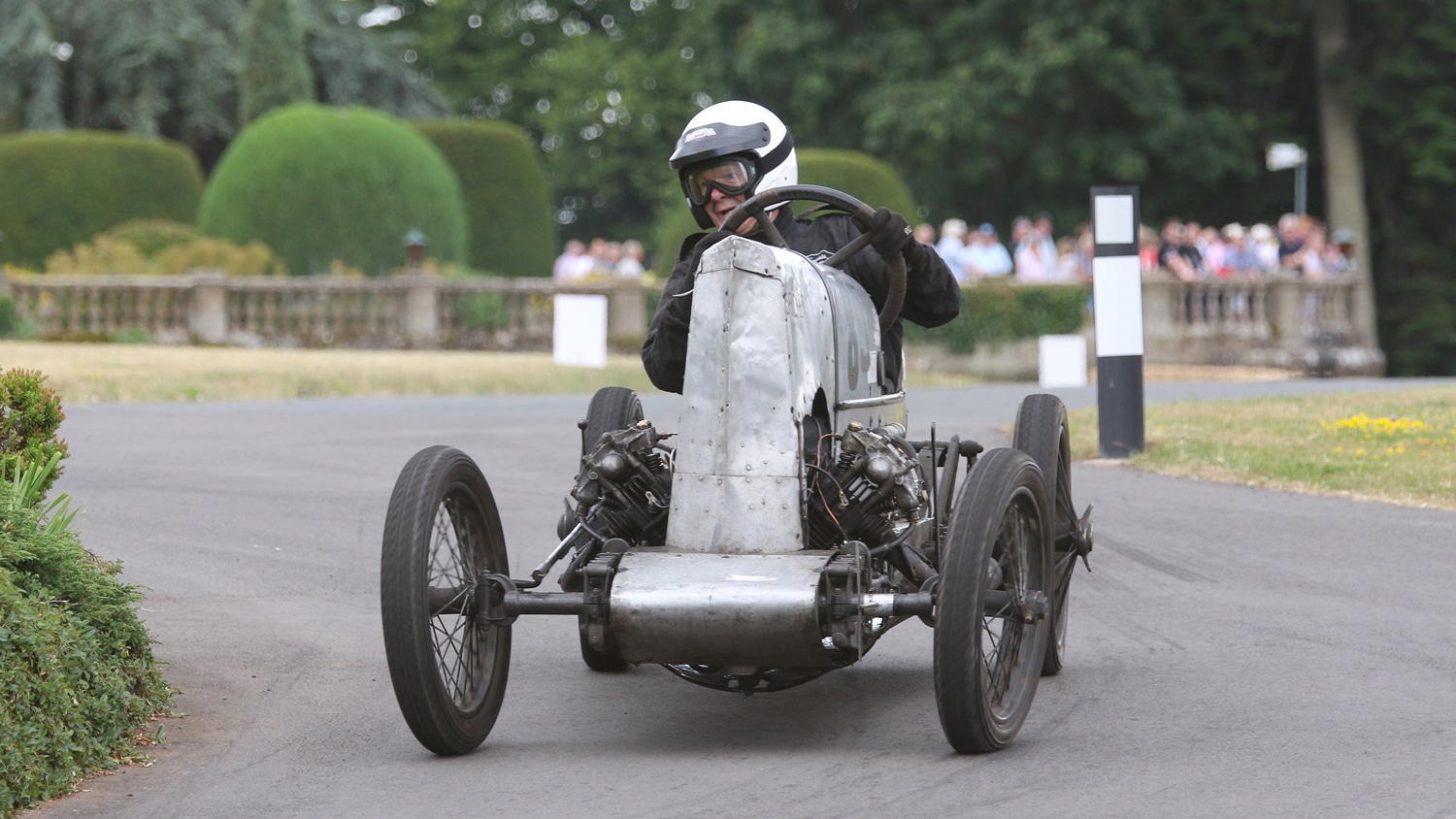The historic racers still fighting the battles of their age
Not all the cars that Motor Sport reported on in its early years are museum pieces. Many are still being run in anger by a band of dedicated enthusiasts up and down the country from Goodwood to Shelsley Walsh

Paul Lawrence
Bugatti Type 35C
Over the second half of the 1920s, the Bugatti Type 35 was one of the most successful race cars both with the factory team and in the hands of privateers. It is said that T35s won more than 1000 races in period. The T35C development was introduced in 1926 and used a Roots supercharger to boost the power from Bugatti’s 2-litre overhead cam engine.
Bugatti sent a team of four works T35Cs to Spain for the 1927 San Sebastian Grand Prix, run over the 11-mile Lasarte road course. It was a daunting 430-mile race run in the heat of July and the T35C of Emilio Materassi won in just under 5hr 30min, averaging nearly 80mph, as the factory team dominated the race.
Following the grand prix, the winning car was sold to a Spanish jeweller in Barcelona but was later hidden away to avoid it being lost or confiscated during the Spanish Revolution.
The Bugatti was bricked up in a building and stayed there until an American collector bought it in 1961. It lived in the US for more than 30 years before being acquired for the Halusa family collection.
Since returning to Europe, the T35C has been raced to many successes by the Halusa family and Alex Ames, who manages the collection. Wins include the Earl Howe Trophy at Goodwood and VSCC Williams Trophy.
“It’s a fantastic piece of history and to race a car that’s actually won a grand prix from 1927 is just phenomenal,” says Ames. “They are so beautiful to drive, even on the road, but to actually race them on a circuit is even more fantastic. It’s just like a big go-kart – it is easy to brake and drive quickly, even in the rain. It just dances around. For the cars to still handle the way they do when you consider that the roads were awful back in the 1920s is amazing.
“It is all totally original. We’ve still got the original wheels, but we don’t use them. It just sat there in a museum and the Halusa family decided to buy it as a fantastic piece of history and a unique Bugatti that hadn’t lost a lot of its original parts over the years. When they went to do a grand prix, they were stamped with a number on the crankcase and this car still has that, from when it was entered into the 1927 San Sebastian Grand Prix.”
Fiat S76 ‘The Beast of Turin’
The Fiat S76, nicknamed ‘The Beast of Turin’, was a 1910 car built by the Italian company with the sole intent of beating the Land Speed Record held at the time by the Blitzen Benz.
At over 28 litres, it delivered 290bhp and just two were built. The car owned by Russian Prince Boris Soukhanov ran at Brooklands in 1912-13 and on Saltburn Sands, where it reached a speed of 116mph. Later, it achieved 132mph at Ostend in Belgium.

Terrifying to drive in period, but this S76 ‘Beast of Turin’ recreation is not so nerve-racking
Duncan Pittaway’s recreation of this remarkable piece of history took many years and began with an Edwardian Fiat chassis and an S76 engine. After a huge effort, the car was ready to run in 2015, and has since been thrilling onlookers with its fire-breathing performance. Pittaway has raced the car at Goodwood and run it in a number of hillclimbs and demonstration events.
Pittaway explained: “It’s been an obsession of mine for 30 years and it’s much nicer to drive than people think it might be. It’s not very heavy at about 1300kg and people think it must weigh two tons, but it doesn’t.
“It was a labour of love for many years. Bruce Friendship, known as ‘Tucker’, who died in 2017, worked on it with me for years. The steering is light and the engine is lovely now. Tucker and I spent years perfecting the carburetion and ignition and all the bits and pieces. And the steering is lovely. At Goodwood it pulls 105mph down the back straight, which is fabulous.”
ERA R4D
In the story of English Racing Automobiles, chassis R4D is one of the most enduringly successful. It was a pre-war record holder with Raymond Mays and has a continuous history via drivers like Ken Wharton, Neil Corner, Mac Hulbert and now Ben Fidler.
Originally a new chassis in 1938, Mays drove ERA R4D to great success and after the war future BRM drivers like Wharton and Ron Flockhart owned and raced it.
R4D has the classic ‘sit up and beg’ driving position of 1930s voiturettes and has been described as a real challenge to drive, but ERA owner Fidler does not agree.
“It actually came to my father Brian between 2015 and 2020 and then I’ve owned it since 2020,” says Fidler. “It’s a wonderful piece of history and is that clear link between the pre-war ERAs and the post-war BRMs.

Unforgiving monster or misunderstood beauty? The ERA R4D splits opinion, but its owner treats it with due respect
Paul Lawrence
“There is an amazing continuous racing story to the car – and it’s also very, very quick. You need to treat it with respect but I would say, genuinely, it’s not quite the terrifying beast that some people down the years have made out.”
It might not deserve its fearsome reputation but get behind the wheel and its power is apparent, with a lot of torque. And yes, it’s possible to drift it sideways.
“It’s a privilege to be able to have that history and I’m certainly aware that you want to drive it competitively, but I want to look after it,” explains Fidler. “We’re just here looking after it for the next generation.”
GN Spider
A century ago, Basil Davenport was terrorising bigger and more expensive cars in his GN Spider, right. Notably at Shelsley Walsh, Davenport and his special were a match for most and now, 100 years later, owner Jim Edwards continues the tradition.
Having completed a rebuild of the Frazer Nash V-twin engine for previous owner David Leigh, Edwards was ideally placed to acquire Spider when Leigh decided to sell it four or five years ago. Spider is based on a Narrow GN cyclecar chassis and retains the patina of a century of competitive action. It has little in the way of front brakes and a handbrake is used to slow it down.

“He didn’t put a foot brake on it because there’s no room in the footwell as the body is so narrow,” Edwards explains. “At Shelsley with the gradient, you don’t really need brakes. You’re only breaking for Bottom Ess, so that’s all done on the handbrake.”
In 1926, Davenport was the first driver to break 50sec for the 1000yd climb but never got below 40sec. However, 70 years later, Leigh finally climbed in less than 40sec.
Edwards says: “It’s very original which is remarkable. It handles fantastically and there aren’t any modern bits to it. It’s a scruffy old thing. If you machine something for it, you don’t make it look too good. You machine it properly and then rough it up a bit so that it blends in with the car!”
